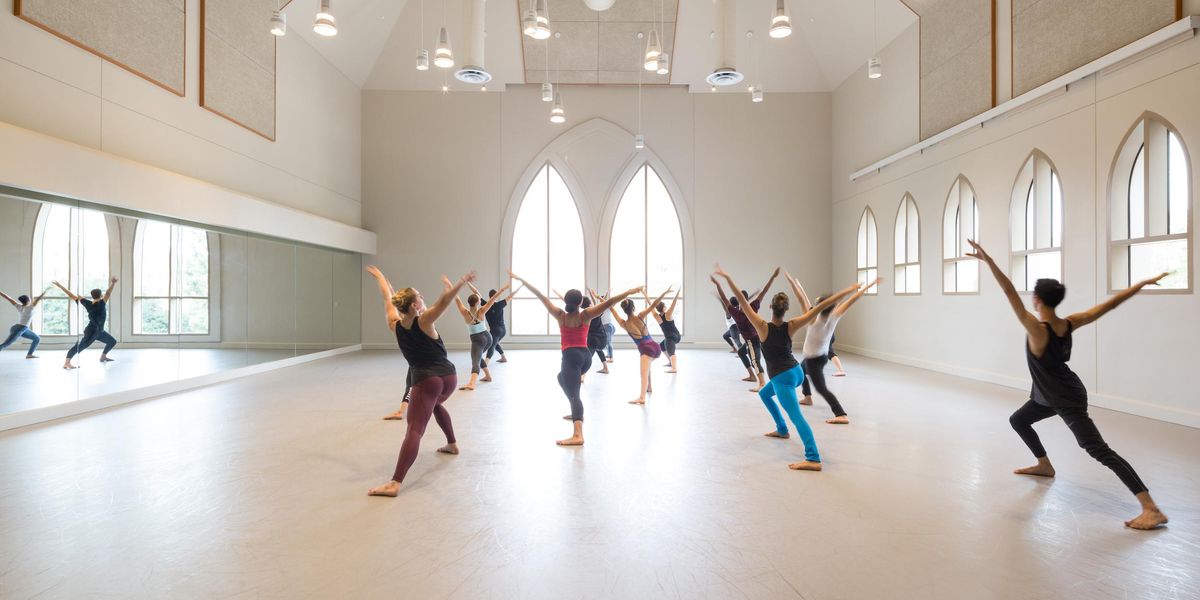Rebecca Lazier
The Invisible Dog Art Center
Brooklyn, NY
June 12–15, 2013
A dance performance inspired by a riot, no matter how violent in execution, will never be a riot. No dance will ever capture or adequately explain what happened at New York’s Attica Correctional Facility in 1971, when prisoners rose up, took hostages and voiced demands. Their confrontation with state authorities, police, and the National Guard resulted in 39 deaths. Setting that aside, we can look at what Rebecca Lazier, with her outstanding dancers and collaborators, has accomplished in Coming Together/Attica, a premiere at The Invisible Dog Art Center.
Set to two works on the Attica uprising by Frederic Rzewski, performed live by the indie-classical ensemble Newspeak, this piece packs more into its 50 minutes than most dance productions manage to deliver in twice the time. The audience—lining all four sides of the initial performance area—finds itself confined with Lazier’s artists within a small, drab space, the dim lighting unrelieved by a faint glow from frosted windows. With the orchestra’s startling first bang, dancers appear, nothing separating us from them. They sit, gazing and occasionally slouching atop metal folding chairs, just like us and on our level. Tubes of fluorescent light, placed beneath their seats, pop on or flash, only adding to the bleakness.
This first section, “Coming Together”—with Rzewski’s driving, percussive rhythm and Mellissa Hughes spitting text from a letter by slain Attica leader Sam Melville—suggests what it might feel like to be in a prison in meltdown. In a long, punishing sequence, dancers Asli Bulbul, Pierre Guilbault, Jennifer Lafferty, Rashaun Mitchell, Christopher Ralph, and Silas Riener manhandle and abuse one another, grappling and struggling. One question: Since they wear indentical grey, zippered coveralls—Mary-Jo Mecca’s rendering of prison garb–where, in all this terrifying action, are Attica’s corrections officers and outside forces?
Hurling themselves from one corner of the space to another like water breaching a ship, the dancers show an astonishing openness—even feral appetite—for Lazier’s vision of chaos. Watching them, we fear for their safety—and our own.
With the arrival of Part II—“Silence”—dancers and audience quickly reposition themselves surrounding another space. (To my knowledge, no one issued directions, and this appeared to work with quiet, follow-the-leader efficiency.) Like the Attica rebels with their barriers constructed from tables, the dancers stack a few tables atop a larger one. Lined up across this watchtower, they look down upon the audience with disinterest and boredom, drooping or fidgeting in myriad ways. Riener pulls at strands of his luxuriant hair. Bulbul snatches an imaginary fly from the air and eats it. Silence forces us to fix our attention on every detail of their lack of attention. We feel the space’s energy slacken, sucked away.
In Part III—“Attica”—Lazier switches to Rzewski’s interpretation of the words of Richard X. Clark, a riot survivor later freed on parole. When asked how it felt to leave Attica behind him, Clark replied, “Attica is in front of me now.” More than 40 years later, the business of Attica and racism in the U.S. prison system remains unfinished. Perhaps Lazier’s audiences will ponder this. For now, she chooses to throw her work’s final space open to powerfully cleansing movement.
Here music returns as does energy and even a measure of outside light with the opening of window blinds to the view of a neighboring tree. Rzewski’s repetitive, accumulating phrases introduce a peaceful drone and chime. Once again, the audience turns to sit along a new space. Here dancers, now in white sleeveless shirts, shorts, and jazz shoes, airily scythe and crisscross, their movements resounding like struck bells. Where did Rzewski and Lazier find these angels?
I momentarily closed my eyes and felt a stinging chill on my cheek as a dancer—Riener, I think—brushed past me. I felt awakened, if not quite released.
Pictured at top: Part III “Attica” of Rebecca Lazier’s
Coming Together/Attica; photo by Julie Lemberger.




